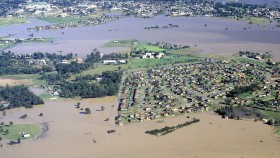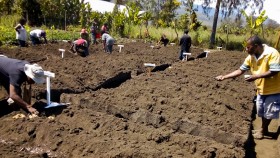We know that heat kills; accurately measuring these deaths will help us assess the impacts of climate change
Australia is well known for its temperature extremes, with scorching hot summers and, in some areas, icy winters.
These temperatures can be so extreme that they can be fatal.
Dr Thomas Longden has been looking into this issue.
“My research has focused on measuring the number of deaths that are associated with extreme temperatures in Australia.”
His most recent study into the issue specifically examined heat-related deaths in Australia. It assessed how often death certificates had ‘excessive natural heat’ recorded as a contributory factor. The results were staggering.
“My research found that in Australia, there were over 36,000 deaths associated with the heat between 2006 and 2017. This equates to about 2% of total deaths in Australia for this time period.”
“We looked into the morbidities that are coded on the death certificate and found that only a few hundred death certificates had extreme heat recorded on them as a contributory factor.”
“This indicates that when doctors are filling out death certificates, they don’t focus on the external causes of death. Instead, they are mainly focused on the biological or internal causes of death.”
There are significant implications of not recording the impact of temperature on death certificates.
“As temperature-related deaths are one of the main measures we use to assess the impacts of climate change, it’s important we measure them accurately and consistently.”
“One of the most confronting impacts of climate change is the risk of more deaths from hot weather. Heat stress can exacerbate existing health conditions including diabetes, kidney disease and heart disease. Older people are particularly vulnerable.”
In previous work, Thomas found several contributing factors to what makes certain heatwaves deadlier than others. Surprisingly, the hottest temperatures were not always the deadliest.
“Some of the worst heatwaves were actually in Melbourne, Adelaide, and Perth. The reason why they were the more deadly heatwaves is because they involved a rapid increase in temperature.”
“So although they weren’t reaching the hottest temperatures in the data set, the temperature change was so quick, and was so drastically different to the prevailing summer temperatures, that there was limited time for acclimatisation.”
Thomas also found an emerging trend across the deadliest heatwaves of the last decade.
“These heatwaves were different to others because there was a temperature threshold that was being passed.”
“When a heatwave is 7 degrees or more hotter than the prevailing 30-day average, it increases mortality by a significant amount.”
“Climate change will make these type of events more common, and potentially push the temperature above that threshold more often.”
Climate change may also mean that periods of the year where Australia experiences heatwaves will lengthen.
“It’s similar to what’s happening with the bushfire season.”
“The bushfire seasons are starting earlier and finishing later, and that’s potentially true for what’s going to happen with the risk of heat. The troublesome period for many regions across Australia will lengthen.”
Thomas says these extended periods may catch people unawares.
“I think that’s a really dangerous possibility in coming decades, where people get caught out by strong heatwaves that happen in abnormal times of the year.”
“November and March may have more heat-related deaths in the future, whereas previously the hottest and most dangerous events tended to be in January or February.”
Thomas’ next area of focus is on how vulnerability to temperature extremes differs across communities. For example, a recent working paper focused on temperature-related mortality across occupation groups in Mexico. It examined the impact of heat and cold across agricultural, informal, blue-collar, white-collar, and unemployed workers.
“One thing that we need to understand is how vulnerability changes across socio-economic groups and occupations. For Mexico, we found that white-collar workers are significantly more resilient to or protected from extreme temperatures than other labour groups.”
“We need an improved understanding about who is most impacted by heatwaves and cold-waves. That’s where some of my recent research has focused, and we are trying to get a sense of the underlying factors that are driving vulnerability.”
"This vulnerability is not just a health issue, it’s an energy-security issue, it’s an equity issue, and typically it’s impacting people who are already vulnerable to other issues.”
“A lot of people can stay indoors in air-conditioned houses; and if their bills go up many can afford it, but there’s a lot of people who can’t.”
“There’s plenty of scope for having better energy efficiency, and better initiatives to make sure that access to heating and cooling in homes doesn’t differ by suburb and socio-economics.”
Dr Thomas Longden’s most recent studies include:
‘Heat-related mortality: an urgent need to recognise and record’ published in The Lancet Planetary Health
‘The impact of temperature on mortality across different climate zones’ published in Climatic Change
‘Extreme temperature, mortality and occupation’ released as a working paper











